Disclosure: I don’t trust the Government when it comes to managing nutrition or health outcomes. I generally follow a low-carb/paleo approach to food consumption.
Since early 2018 – I’ve been wearing a continuous glucose monitor (CGM). A CGM is intended for those managing their blood glucose (Type 1 or 2 diabetics) and it’s a lifesaver! I’m not a diabetic. However, I strongly believe ALL people should have access to a CGM for at least 2 weeks (that’s how long they’re programed to work). A CGM provides you with a LOT of actionable information. It’s a realtime look at how specific foods and lifestyle decisions impact the levels of blood sugar in your very own blood. Not theory, not speculation… just evidence. We’ll get in to why this is important in a bit.
Note: Currently in most states you need a prescription for a continuous glucose monitor.
Note: There are some states where a pharmacist may prescribe a CGM.
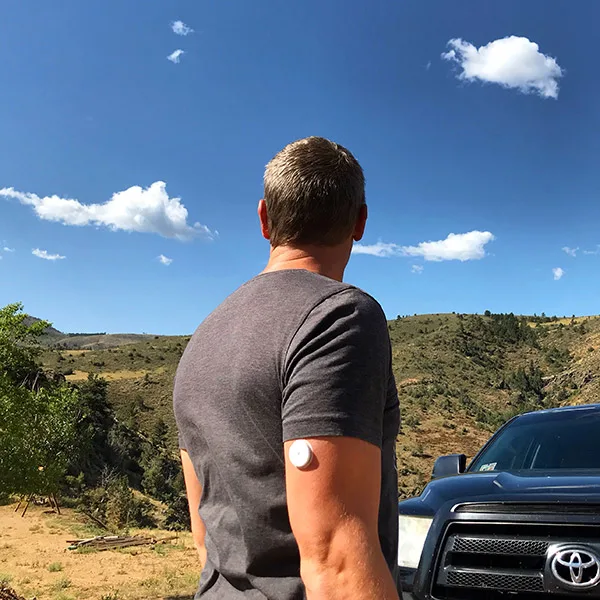
What is a CGM?
Imagine having to poke your finger with a needle over and over each day to monitor your blood glucose, it’s gotta be terrible! Painful fingertips. All the while you’re having to deal with all of the symptoms that go along with being diabetic (either type 1 or 2), real bummer! The CGM eliminates that pain and provides users with a blood sugar reading anytime, with no finger prick, right on an app, a real life changer.
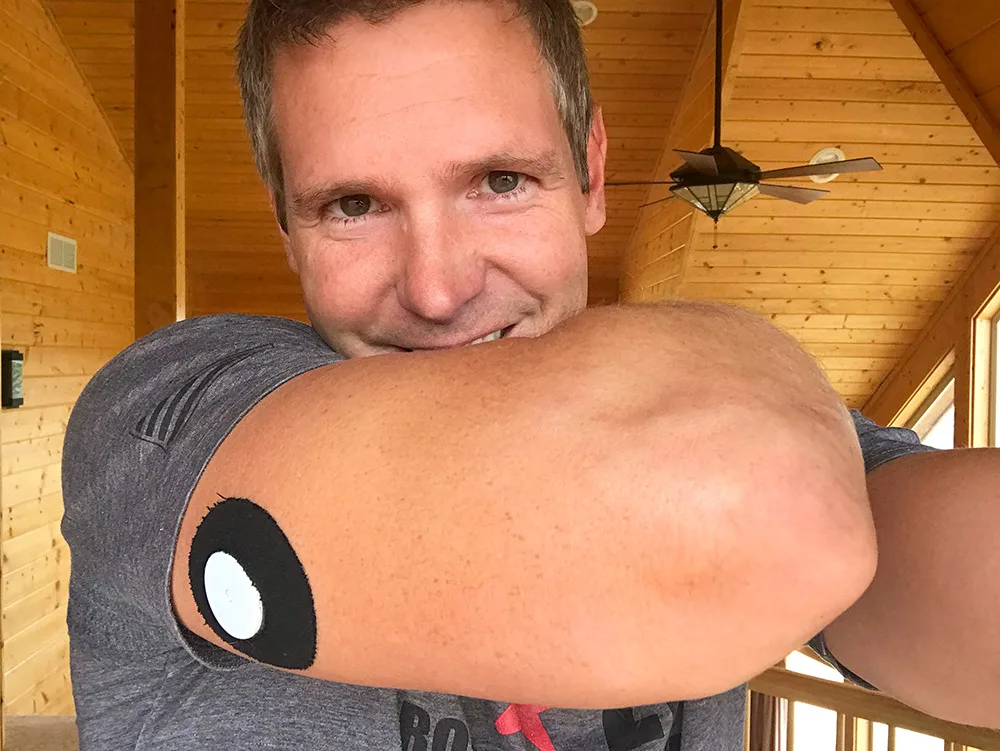
The CGM doesn’t take glucose readings from your blood. The CGM readings are taken from the interstitial fluid (ISF). The ISF is a thin layer of fluid that surrounds the cells of the tissues below your skin. Readings from a CGM are typically 5-10 minutes behind CGM readings (derived from the ISF).
Visual Comparison (Keto vs. the MyPlate Plan)
These two images are taken 1 day apart. The Keto image is what my blood sugar typically looks like (day before testing the My Plate Plan). The MyPlate reading is after (1) day of eating the Government’s recommended food groups and diet plan – much more on this in this post (keep reading).
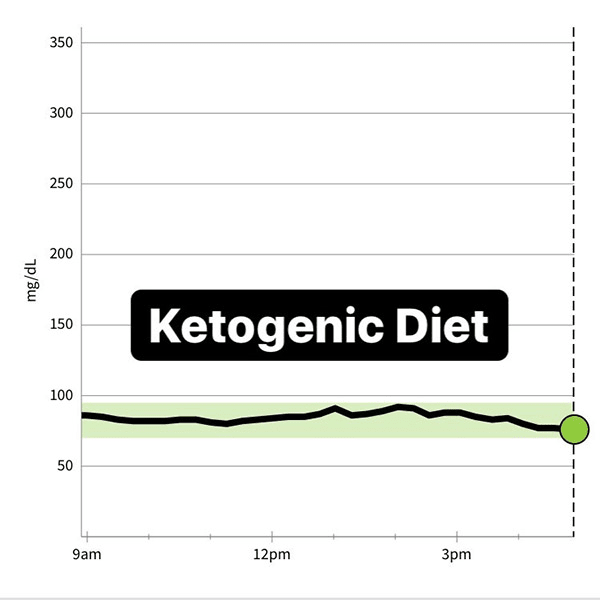
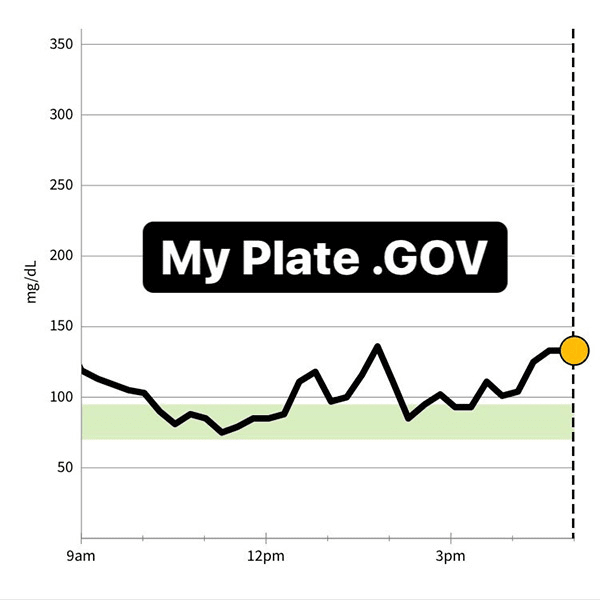
The monitor is easy to install, you can even do it yourself (however, applying the sticker around it – get another set of hands to help). Here’s what it looks like out of the box:
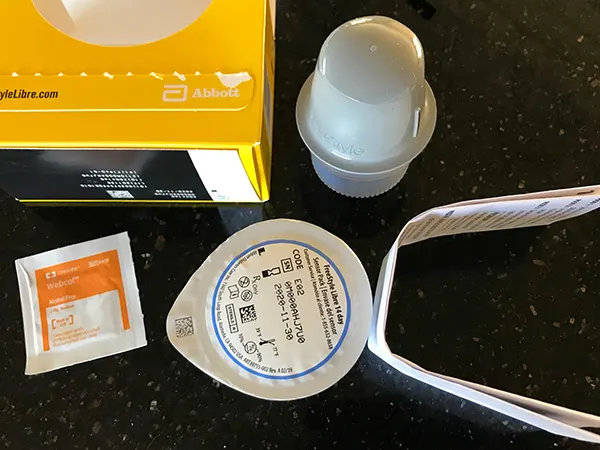
Diet & Macronutrients
Important to note: Everyone is different, which means: there is no one sized fits all diet. However, there are some truths about macronutrients that are important to understand.
Macronutrients include:
- Protein – 4 calories per gram
- Carbohydrates – 4 calories per gram
- Fats – 9 calories per gram
Carbs raise blood sugar. Some carbs act faster than others, some have a greater increase in blood sugar BUT – it’s important to know: ALL CARBS RAISE BLOOD SUGAR.
Why did you test the Government’s recommendations?
I have a theory that most of the recommendations provided by the US Government are largely responsible for the decline in US health over the last 50 years. The rise of type 2 diabetes, heart disease, and insulin resistance are due in part to the vilification of fat (particularly saturated fat), animal protein, and sodium. I also believe the recommendations and subsequent increased consumption of vegetable oils and carbohydrates/sugars are deleterious to the human body.
I wanted to show just ONE element (there are many others) relating to the impact of the recommendations provided by the Government’s My Plate Plan. This one element is the impact of diet recommendations and blood sugar.
I believe: Regulating blood sugar is a VERY important aspect to controlling favorable health outcomes.
Note: Yes, I do believe Keto is an effective tool in managing blood sugar. I also believe the Ketogenic diet to be a tool for many in assisting the reversal of type 2 diabetes. However, I don’t believe the Keto diet to be an answer for ALL – it’s simply ONE tool – this post is not intended to promote a specific diet. But… I am biased toward a ketogenic/paleo diet concept in general. With that out of the way…
What is the Government’s My Plate Plan?
The United States Government offers advice on how you should eat. So here I am showing ONE aspect of this plan and how it impacts MY blood glucose.
The MyPlate Plan shows your food group targets, how many calories you should consume and what you should eat.
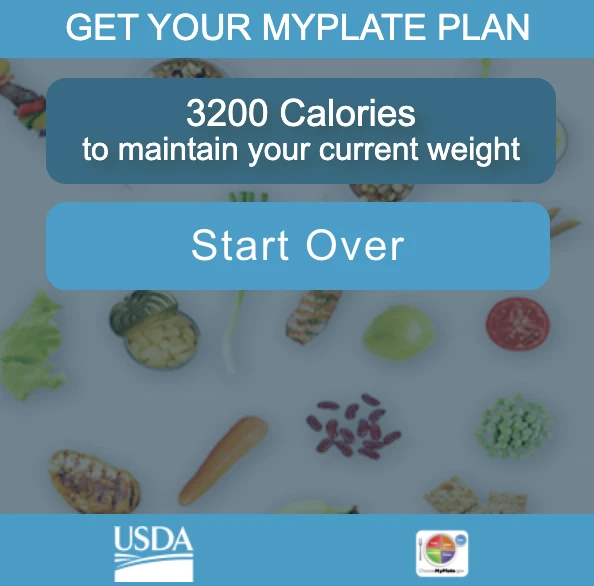
After putting in my details:
- 40 years old
- Male
- Active
- 185lbs
- 6ft Tall
Here are the recommendations spelled out for me on the website:
Fruit: 2½ cups
1 cup from the Fruit Group counts as:
– 1 cup raw, frozen, or cooked/canned fruit; or
– ½ cup dried fruit; or
– 1 cup 100% fruit juice
Grains: 10 ounces
1 ounce from the Grains Group counts as:
– 1 slice bread; or
– 1 ounce ready-to-eat cereal; or
– ½ cup cooked rice, pasta, or cereal
Protein: 7 ounces
1 ounce from the Protein Foods Group counts as:
– 1 ounce cooked/canned lean meats, poultry, or seafood; or
– 1 egg; or
– 1 Tbsp peanut butter; or
– ¼ cup cooked beans or peas; or
– ½ ounce nuts or seeds
Veggies: 4 cups
1 cup from the Vegetable Group counts as:
– 1 cup raw or cooked/canned vegetables; or
– 2 cups leafy salad greens; or
– 1 cup 100% vegetable juice
Dairy: 3 cups
1 cup from the Dairy Group counts as:
– 1 cup milk; or
– 1 cup yogurt; or
– 1 cup fortified soy beverage; or
– 1½ ounces natural cheese or 2 ounces processed cheese
MyPlate Meal Plan (Day 1)
Thanks to my amazing wife: she prepared a VERY specific plan that perfectly meets all criteria of the My Plate Plan. The foods consumed here are what we believe to be typical in what is deemed “healthy” by the My Plate recommendations.

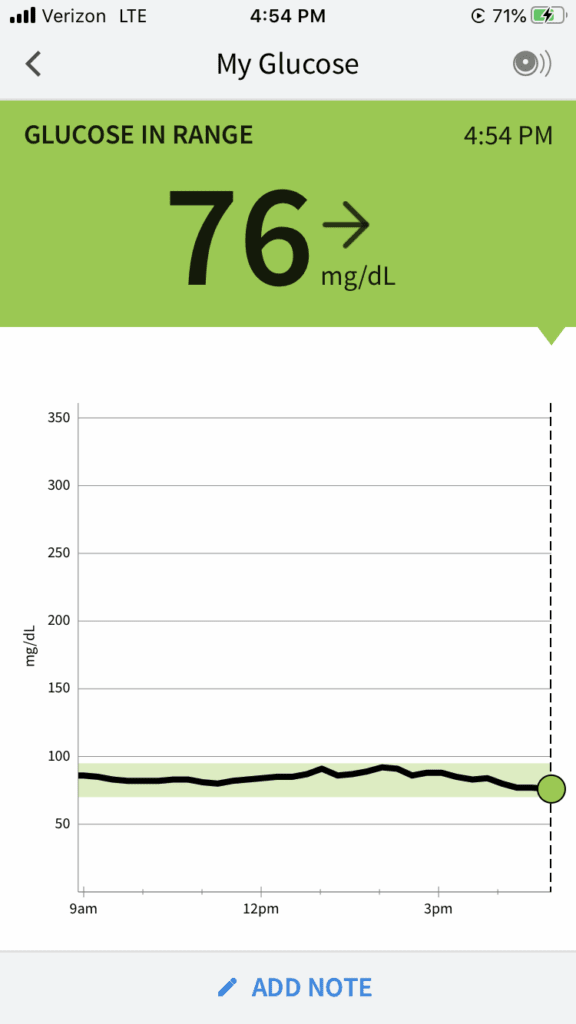
Here’s Monday (the day before the test) – a typical day with regulated blood sugar (on a low-carb diet).
When I’m in deep ketosis my blood sugar levels are lower – in that state my body is using more ketones than blood sugar for energy.
This look is a pretty standard day (with no real energy demands (ie:workout).
The following two images are the morning of (and the night’s sleep prior to) the first day of testing how the My Plate Plan impacted blood sugar.
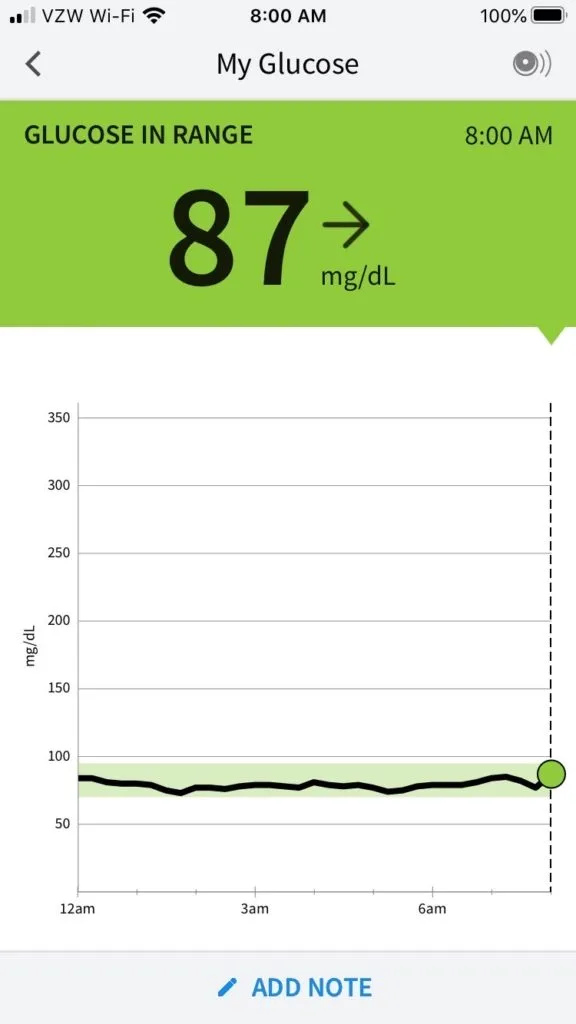
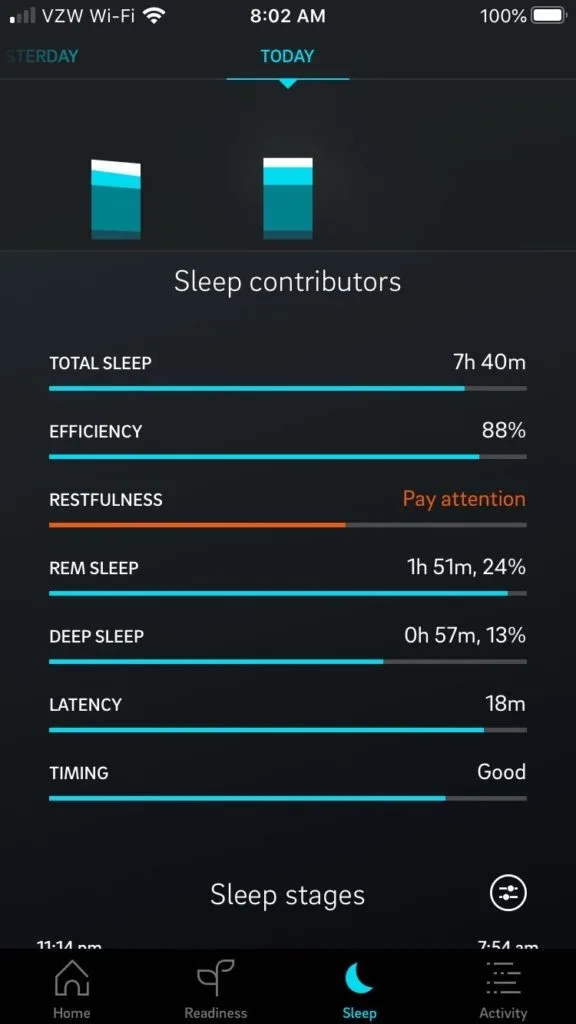
As you can see with the images above regular night’s sleep with a regulated blood sugar.
Leading in to the first day:
- 8AM Breakfast
- 2 bowls of Raisin Bran
- 1 egg
- Half of a banana
- 1 cup orange juice
- 1.5 cup 2% milk
- 10AM Snack
- Mountain Blueberry Yogurt
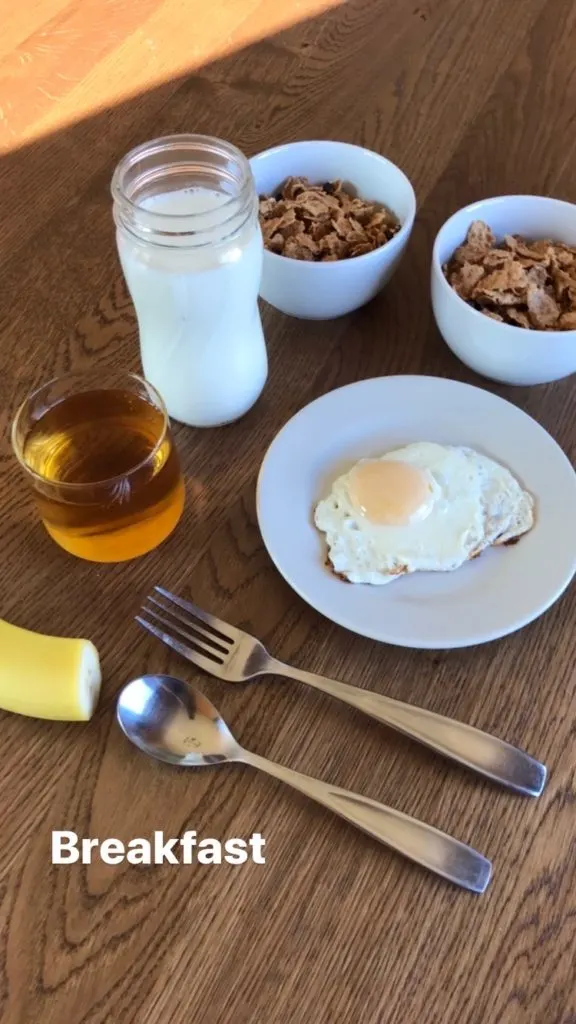
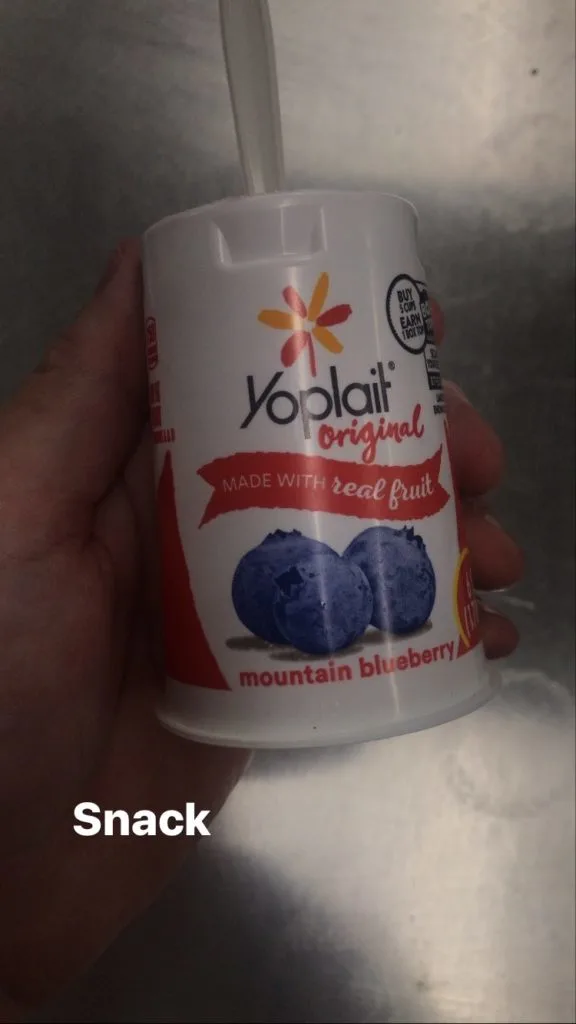
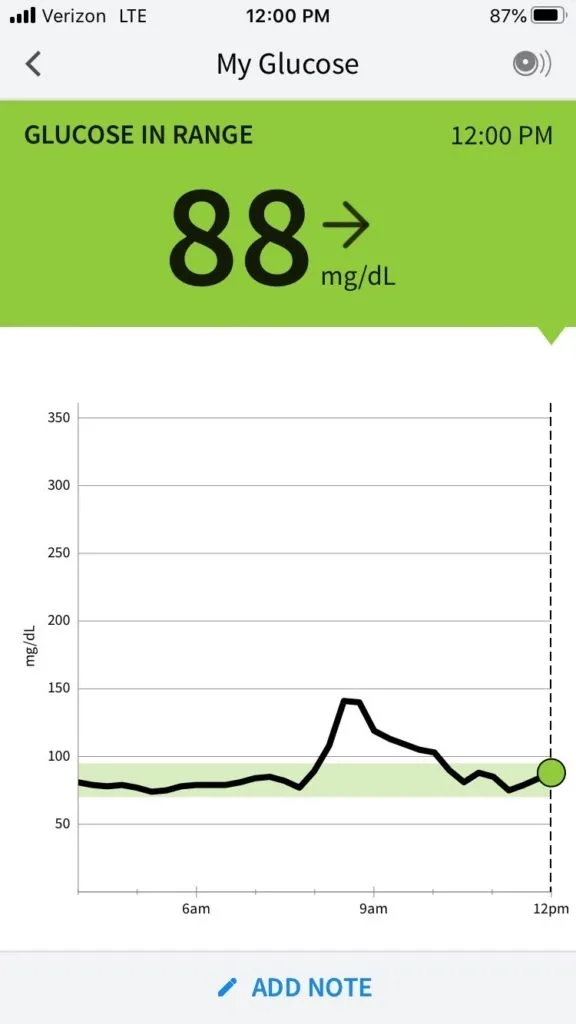
Significant rise in blood glucose right away in the morning – full of energy. Impacts of a subsequent high carb snack didn’t impact the reading significantly (interesting).
Lunch at 12pm – Big sub & apple.
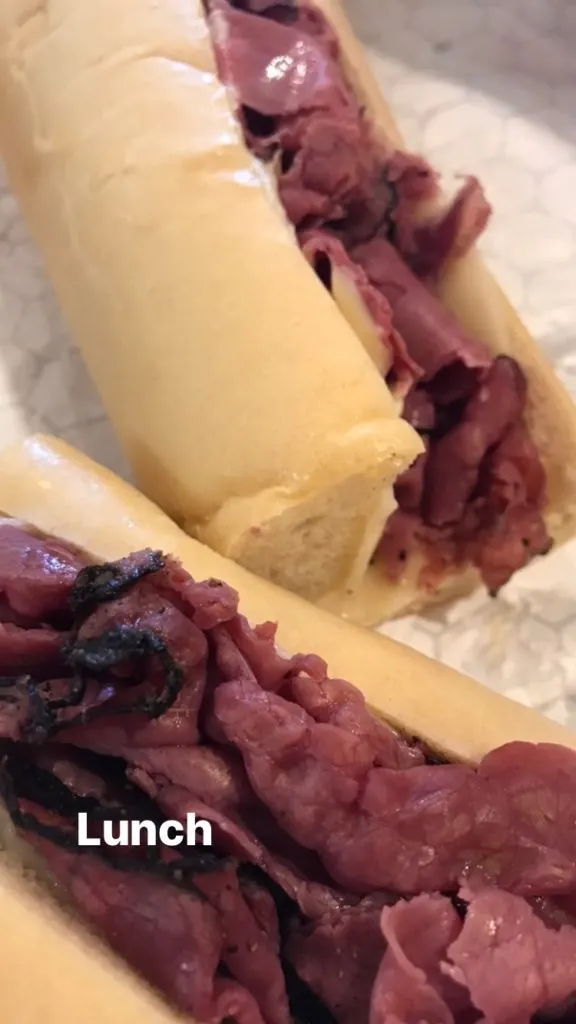
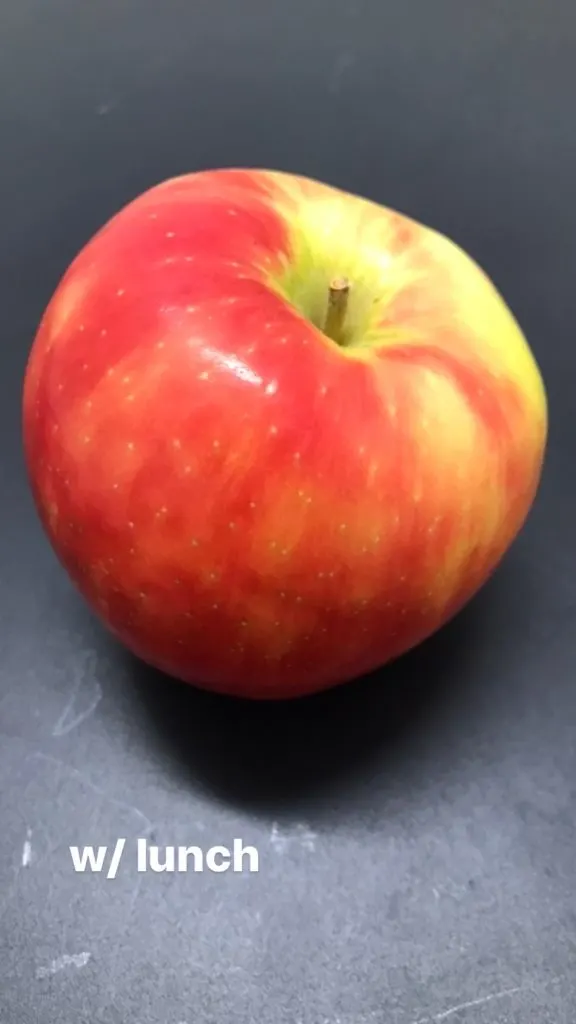
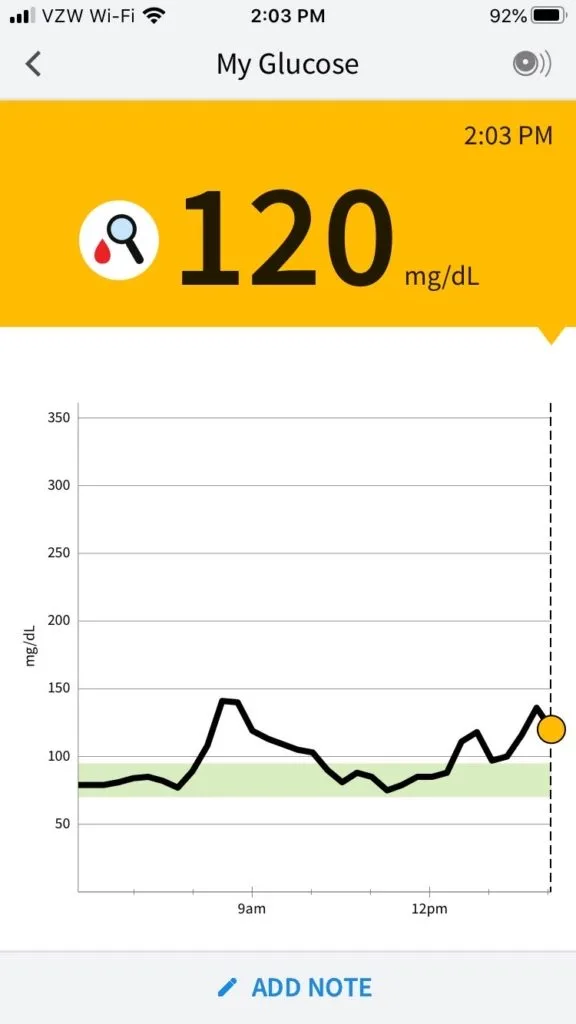
Another significant jump in blood sugar after lunch.
Even though my blood sugar was elevated my energy level plummeted, I was tired between the hours of 1-4. This “crash” feeling I thought would be displayed via the CGM reading as a significant drop in blood sugar but it wasn’t.
This energy level fluctuation is very uncommon on a high fat/protein diet.
More snacks… The recommendation is to eat small throughout the day which goes against everything I believe. It felt like I was always eating (every 2 hours) – and much of what was being consumed was high in carbohydrates.
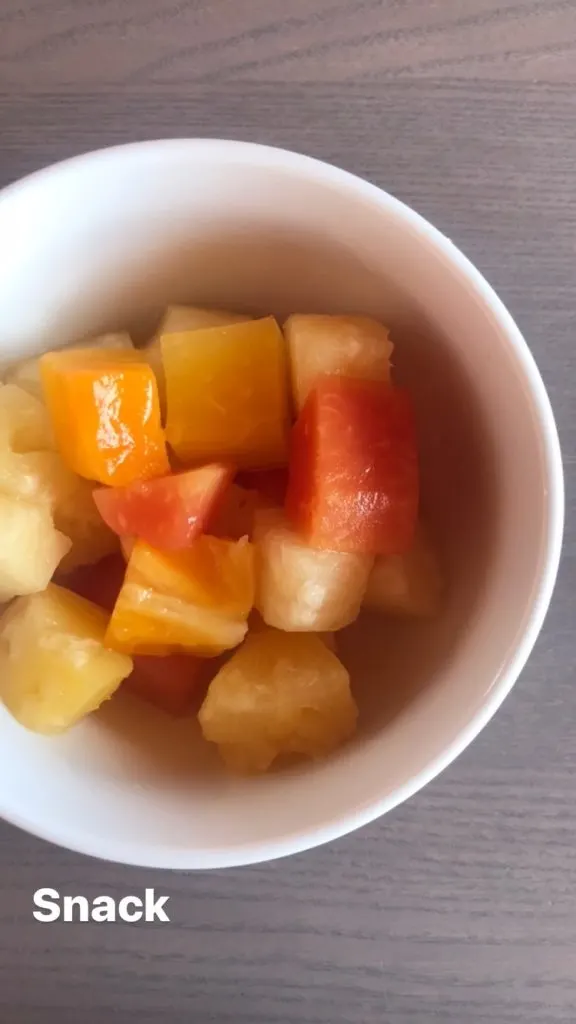
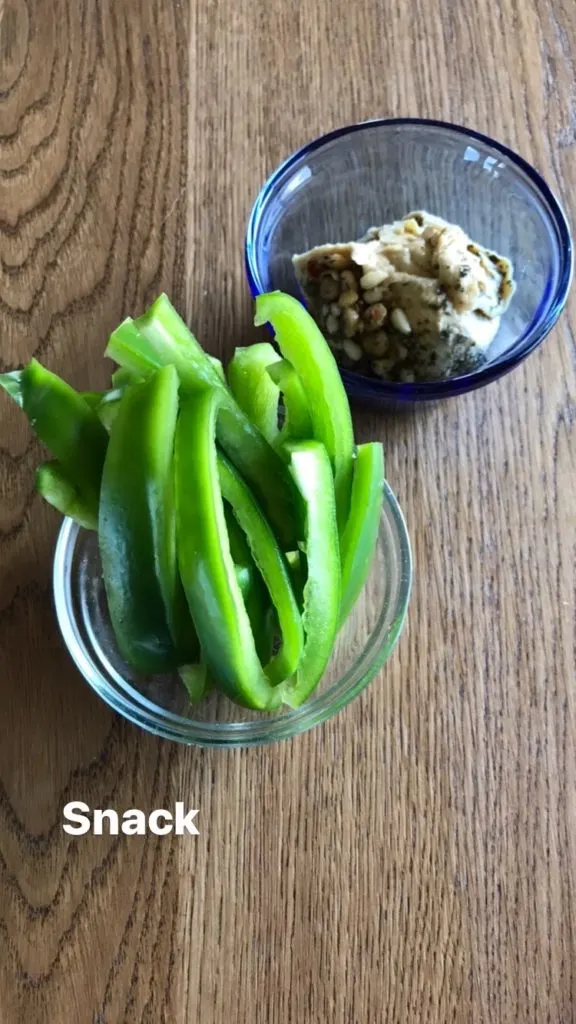
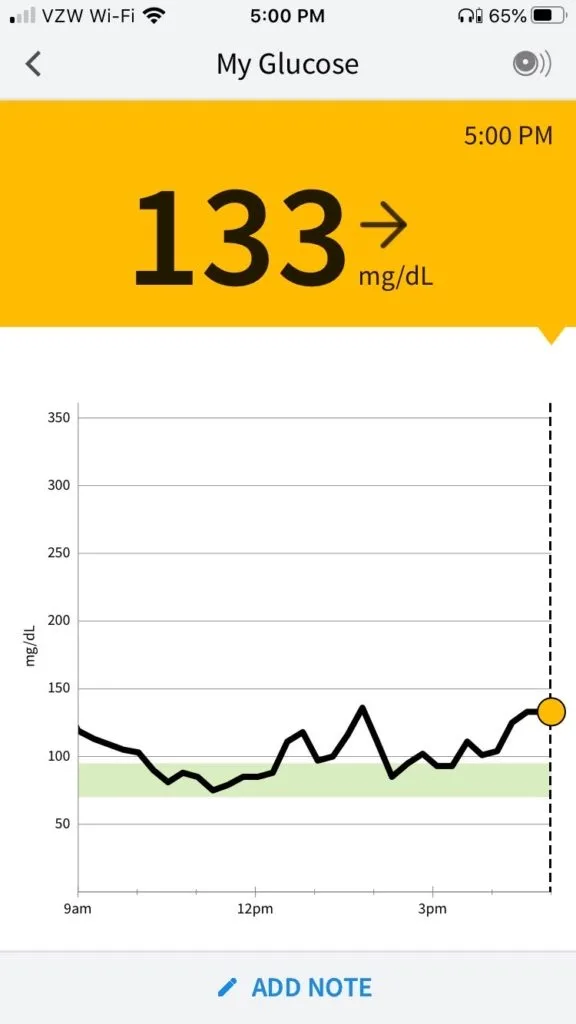
As expected the snacks kept my blood sugar high and bouncing around, up and down.
Dinner a little after 5pm with a snack following at 7:45pm (in between: workout – mostly weights with no cardio). Again, feeling like I was constantly eating (which I was). I feel this constant “nourishment’ isn’t allowing my body to rest, recover, focus energy on other functions.
- Dinner at 5pm
- 2 cups of salad mix
- 4tbsp light ranch
- 4oz chicken breast
- 1 cup canned corn
- Snack at 7:45pm
- 2 slices of toast
- 2 tbsp peanut butter
- 2 tbsp honey
- 1 cup 2% milk
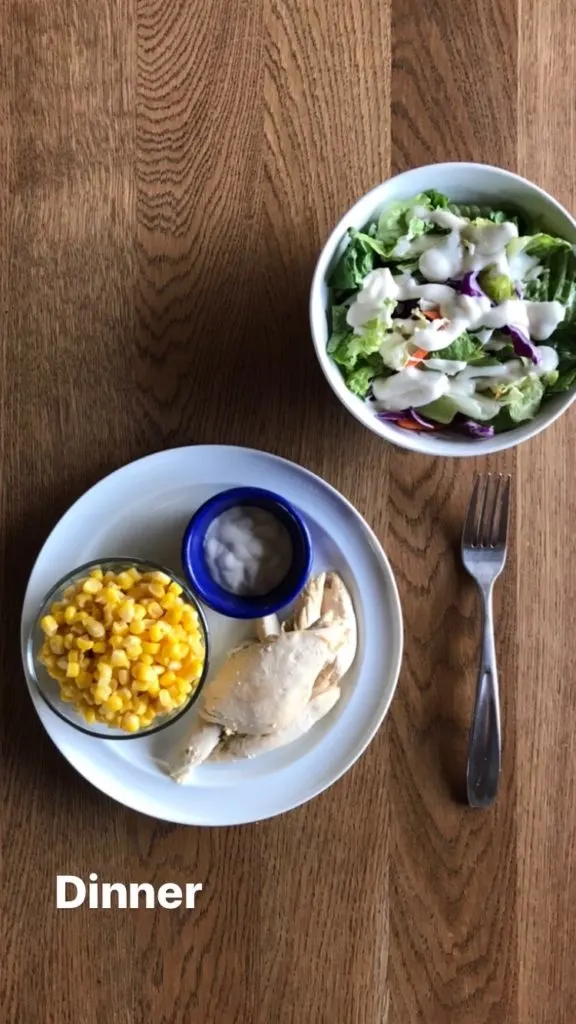
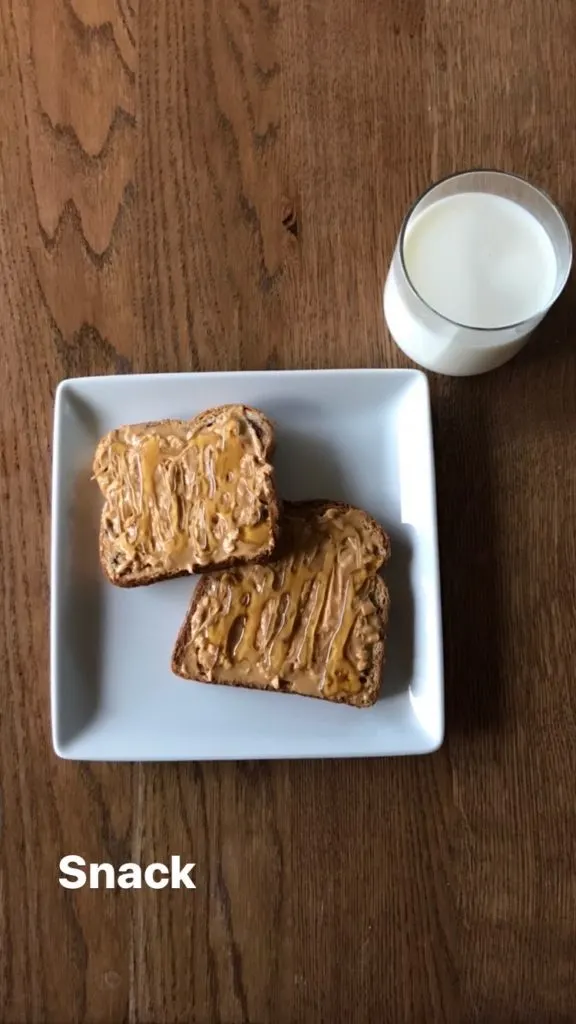
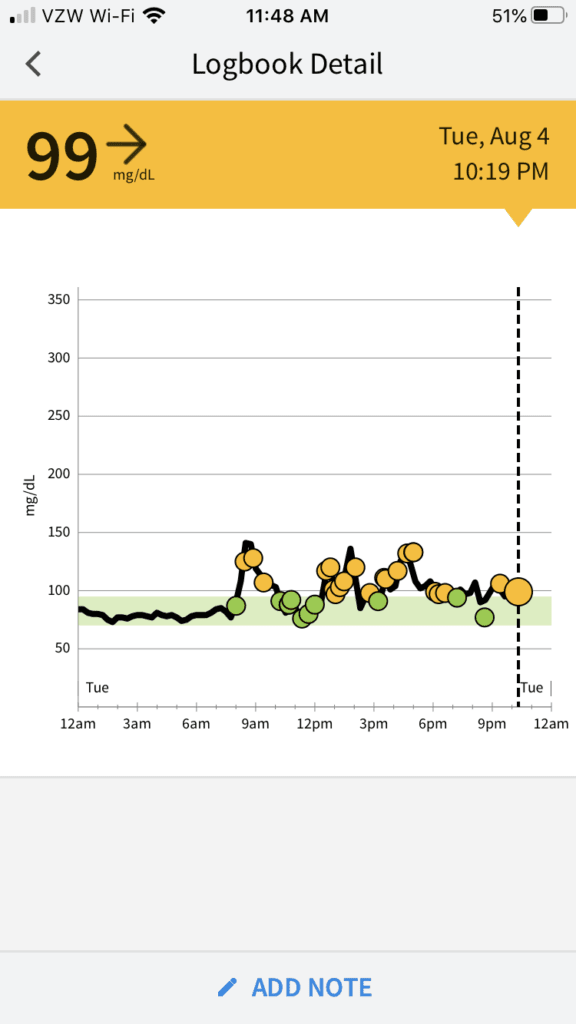
Surprised at how small the spikes were from dinner and snack – My assumption: lifting weights utilized the glucose in my blood for energy output which regulated it more than if I had just sat down on the couch. Meaning: sugars consumed are utilized for energy and help to minimize blood sugar spikes when there’s a demand.
Fun fact: in a ketogenic state (or fasted state) blood sugar rises significantly due to power output demands. Meaning: your body will produce endogenous blood sugar to help you with your energy demands.
Key Takeaways from Day 1
- Increasing fat/protein with a meal may help to regulate blood sugar.
- Energy level during mid day is impacted significantly by blood sugar spikes in the morning (more carbs during breakfast and lunch will dramatically impact how sleepy and unmotivated you feel mid day).
- Snacking more makes me hungry more often.
- Carbohydrate consumption is satiating for a limited time. After 30 minutes – hunger levels are high again.
- Utilizing blood sugar via lifting weights my help to reduce elevated blood sugar. You use what’s in your blood for energy demand.
MyPlate Meal Plan (Day 2)
Today I wanted to follow up with a “good intention day” – You know, those days where you try and follow a diet and it falls apart? You know. We all know. However, I wanted to ensure that i didn’t fall too far outside the recommendations and calories.

The following two images are my overnight glucose and my sleep. Neither of which are troubling (besides the low deep sleep). Higher than normal glucose and lower than normal deep sleep. Neither of which are improvements. After years of tracking sleep I’ve learned a few things about age, daily power output, stressors, and sleep. More on that later.
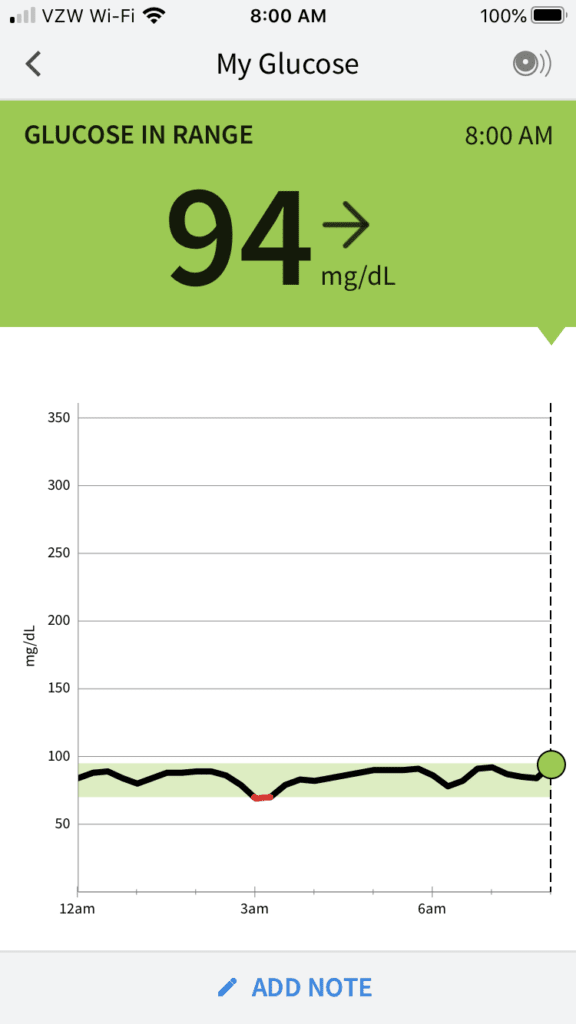
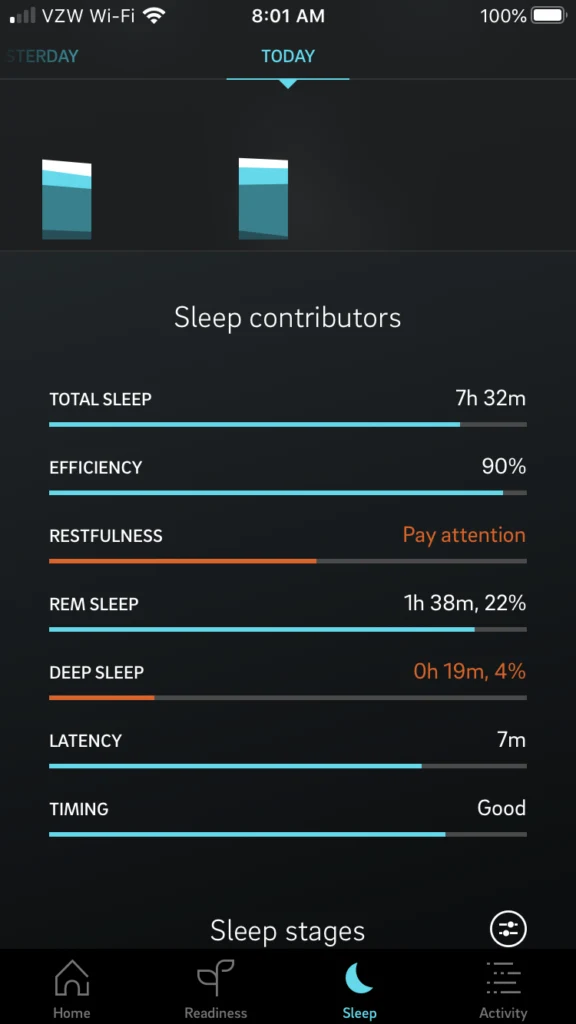
Again, the morning starts out with sugar. Something I’m not used to but something that’s easy to look forward to.
In the past: It took time for me to break the habit of a big breakfast but when I did: the changes were very noticeable. For example: I stopped getting tired later in the day – my energy was prolonged by extending my fast past the wake up, typical break-fast time.
- 8am Breakfast & 10am snack included:
- 1 fried egg
- 1 packet steel cut oats
- 1 cup Apple juice
- 1 cup 2% milk
- 2 slices of toast with peanut butter & honey
- 10am snack
- Banana
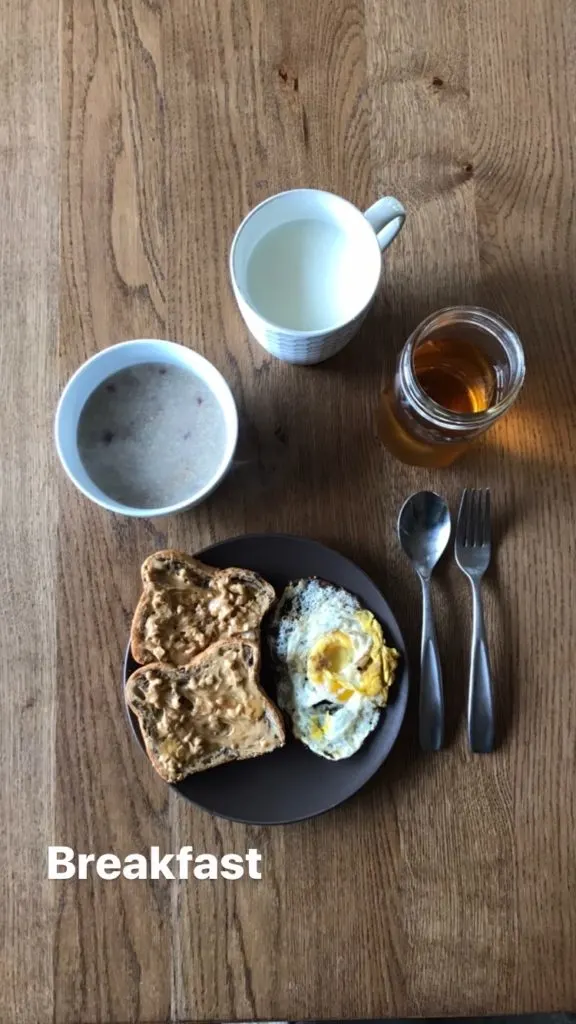
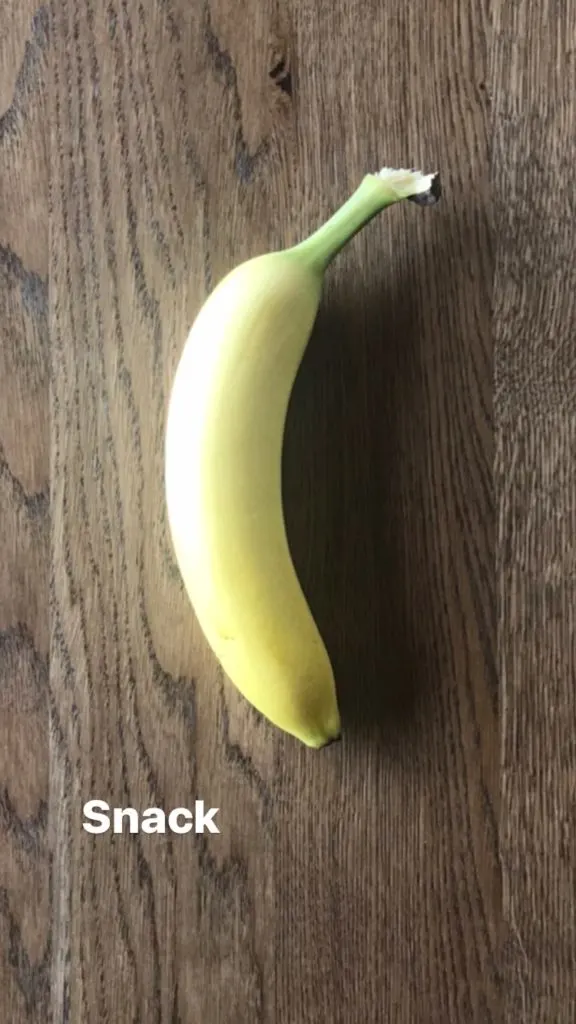
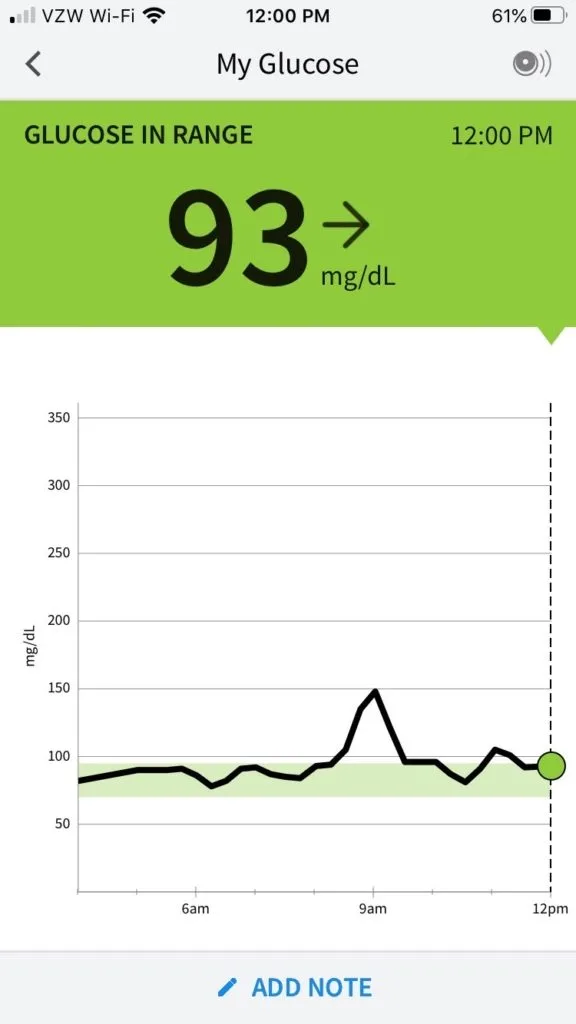
Easy prediction: blood sugar spike and general elevated blood sugar.
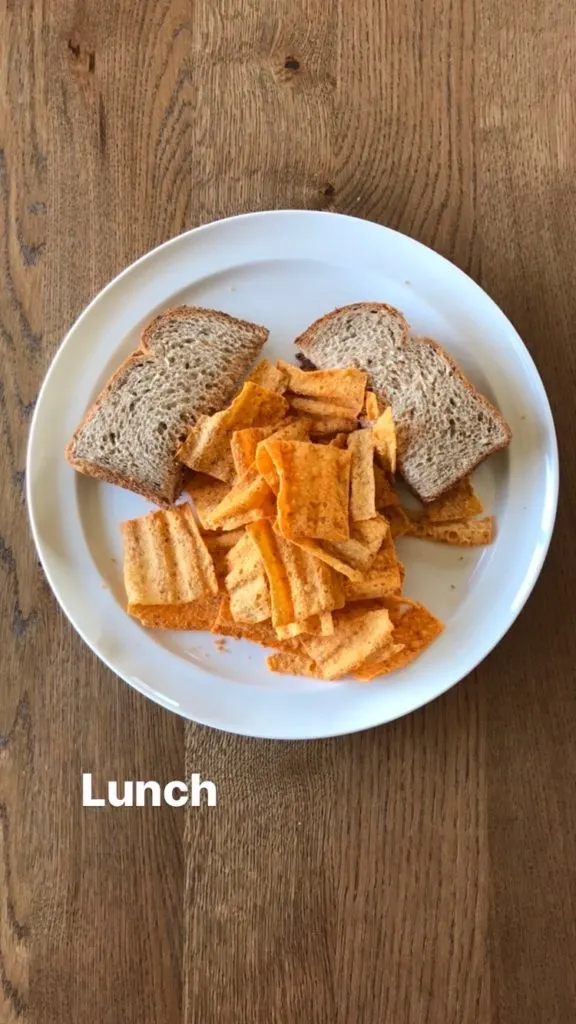
Peanut butter & jelly sandwich with Sun Chips? Take me back to 1994!
This was fun… but:
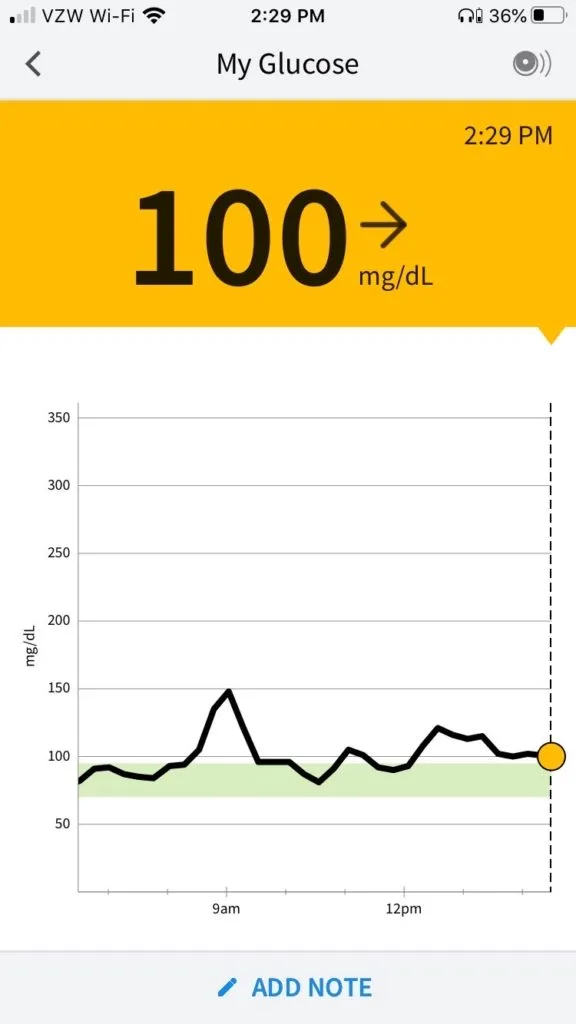
Glucose stayed elevated.
And again: that 2:30 feeling. I wonder how many people think that the “I feel tired in the afternoon” feeling is just built in? It’s not. While there are several reasons (diet, sleep, movement) diet (and the gobbling up of carbs) is the biggest culprit.
Make matters worse: if you’re pre-diabetic the swings will be MUCH GREATER – higher highs and lower lows.
And this is the reason we all know what HANGRY means.
Opted for no afternoon snack because we’re getting pizza and a treat.
Insert controversial thought here.
We’ve got a big problem – treats as a reward, treats as an activity, and the list probably goes on… Individuals that choose not to get a treat when they’re out or when there’s an occasion understand truly what sacrifice is (in relation to food choices). Here’s a C.S. Lewis quote that’s stuck with me on many levels:
“When a man is getting better he understands more and more clearly the evil that is still left in him. When a man is getting worse he understands his own badness less and less. A moderately bad man knows he is not very good: a thoroughly bad man thinks he is all right. This is common sense, really. You understand sleep when you are awake, not while you are sleeping. You can see mistakes in arithmetic when your mind is working properly: while you are making them you cannot see them. You can understand the nature of drunkenness when you are sober, not when you are drunk. Good people know about both good and evil: bad people do not know about either.”
In relation to making poor food choices, you can’t truly appreciate the danger of bad food choices until you are making better choices. You’ll better understand your positive, potential health outcomes by avoiding bad food choices, until then, it’ll be too difficult to accept and change.
Finish controversial thought here.
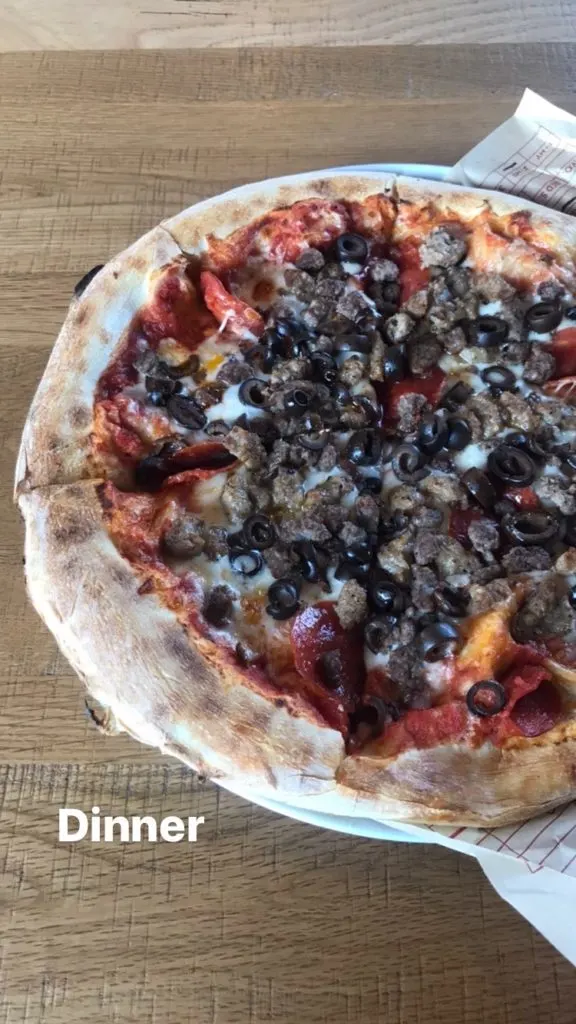
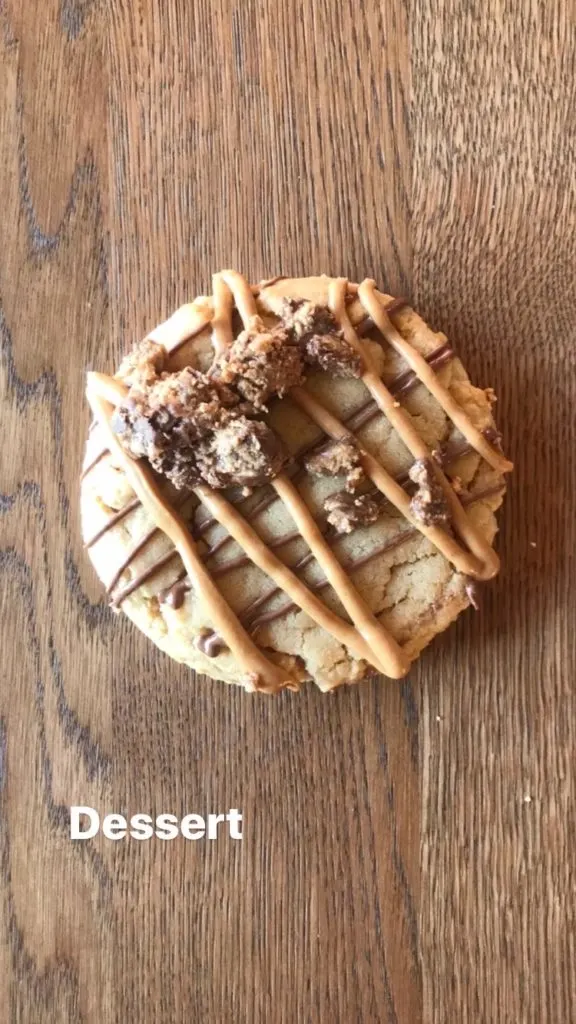
While I wasn’t meeting the requirements for veggies, I was meeting ALL other requirements – crazy huh? In fact, the MYPlate Plan allows for up to 80 grams of ADDED SUGARS! Seriously.
Here’s what 80 grams of sugar looks like (banana for reference). The cookie above has 20 grams of added sugar.
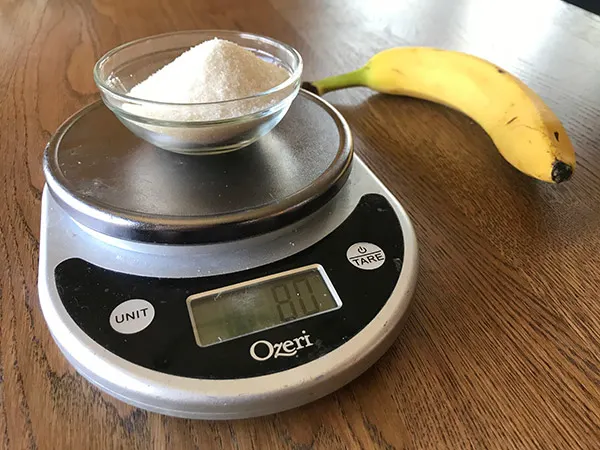
And like you’d expect, some serious blood sugar fluctuation followed. 2 hours after I went to sleep another spike – about 5 hours since eating the cookie!
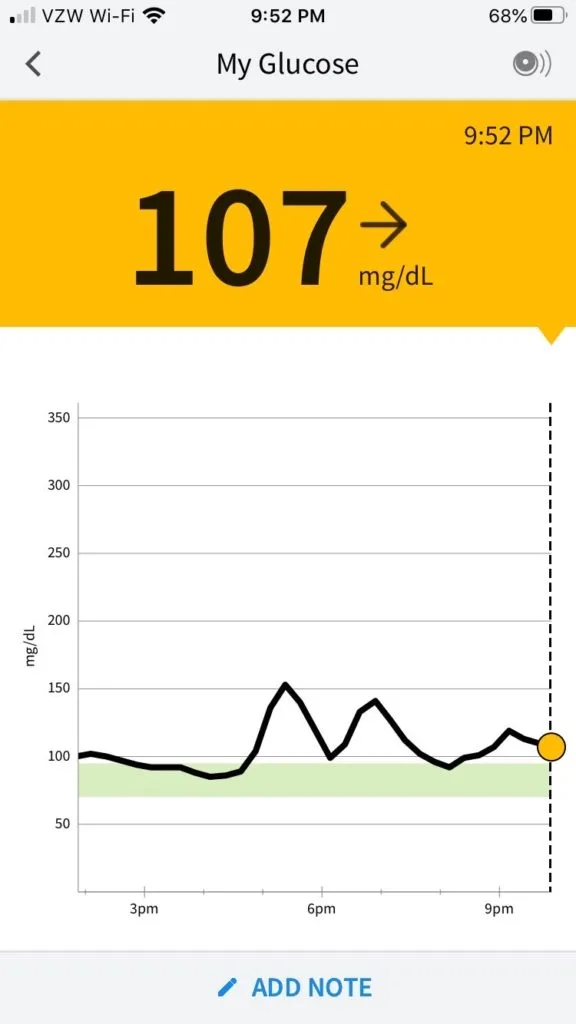
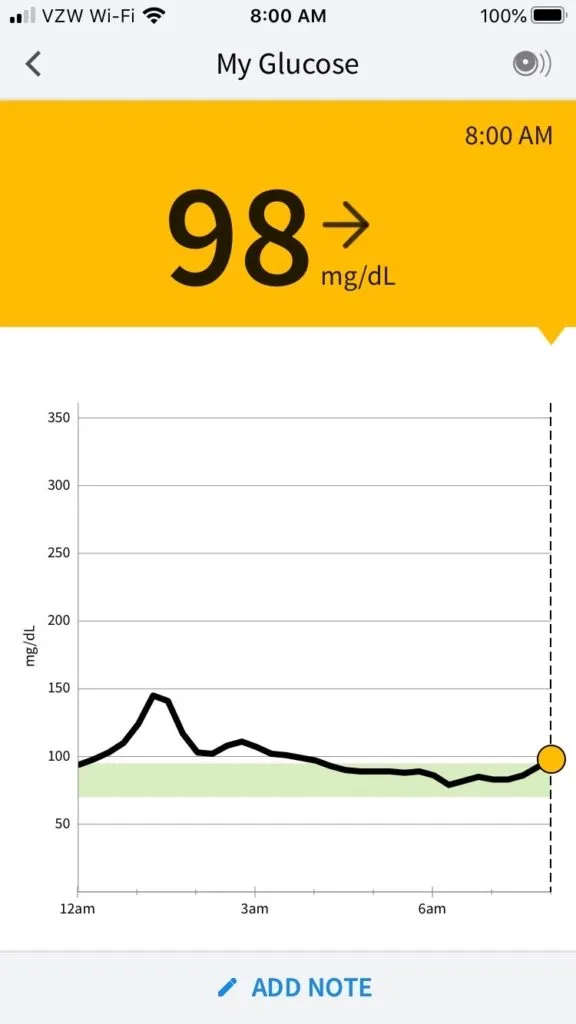
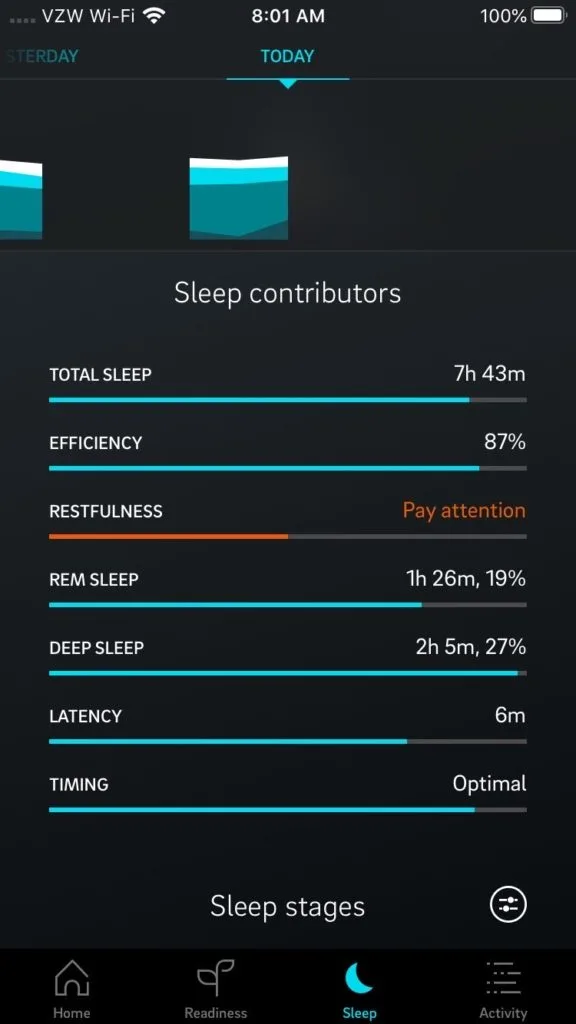
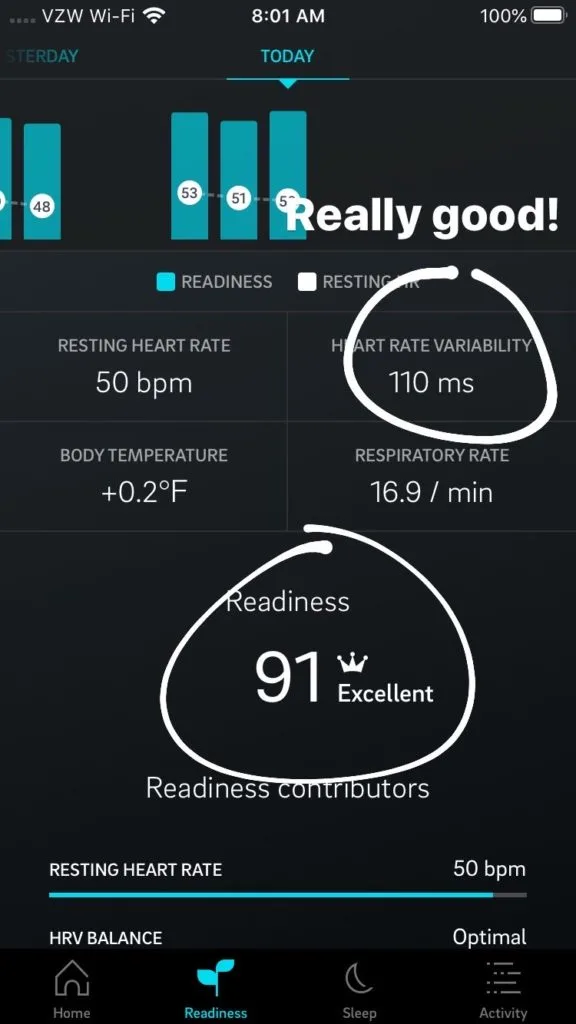
Here’s what may feel like confounding evidence: my sleep was amazing and my HRV was excellent!
I ate a lot of carbs, huge fluctuations of glucose, and I rested. Rest almost always is a contributor to my high HRV and deep sleep next day. High HRV is good! It’s said to be an indicator of your “health age”. The higher the number, the lower the age (the better your metabolic age).
At 40 years old, I’ve learned that I HAVE to rest more. Going hard every OTHER day provides me with the absolute best outcomes. But none of these numbers would grow like this without a coordinated approach. Your body needs stress – then rest. Sauna, Sun, Lift Heavy Things, Loads of Movement, Cold Exposure, and maybe even carbs (a possible stressor). THEN take it easy!
My Takeaways from day 2
- Similar to day 1
- The more carbs I eat the hungrier I get.
- The more fat I eat, the more satisfied I feel.
- If you want sustained energy without the dips – avoid overconsumption of carbs.
- I lost all motivation for working out after my pizza and cookie. All I wanted to do is watch a movie. I didn’t use the blood sugar consumed from the pizza and cookie and the amount of sugar in my blood rose significantly (I didn’t use it).
Key takeaways:
- Blood sugar is elevated by overconsumption of carbohydrates.
- Unused blood sugar is converted to fat and stored for energy later.
- Insulin resistance is when cells in your muscles, fat, and liver don’t respond well to insulin and can’t use glucose from your blood for energy. The result is elevated blood sugar.
- Elevated blood sugar results in type 2 diabetes.
- Type 2 diabetes is completely reversible via restricted carbohydrate intake and increased fat and protein consumption.
- The connection to insulin resistance and cardiovascular issues are VERY closely associated.
- The Government’s My Plate Plan recommendations tend to cause elevated blood glucose, which may in turn promote decreased health outcomes.
After closely reviewing the recommendations of the United States Government, I can safely assume the recommendations are not intended for improved health outcomes of the population but rather the stability of the economy. It’s about money.
Disagree? Have another point of view or concept to share? Please share in the comments!

beth johnson
Tuesday 6th of August 2024
This is a great post with great pics of your Libre. Ive been wearing one as well and learning about what foods cause the spikes. I'm 53, normal BMI but my fasting glucose at my MD has been rising with age I believe its Menopause unfortunately... so I'm working harder than ever to keep the spikes small and line flat. Have you discovered what glucose range indicates your are officially in ketosis? I'm sure its different for all of us. I'm sure the best check would be blood stick or urine strip test but I was just curious. I agree too. Squats or weights after a meal can really bring it down.
Would love you to post more data and share your meals, spikes etc. Did you ever find if a glucose spike improves or lessens doing apple cider vinegar prior to a meal? I do that sometimes and often start my meal with a fibrous veggie....Thanks a bunch
Claire
Saturday 2nd of December 2023
This is fantastic, thank you!!!
Allie
Monday 10th of April 2023
What a great post! Ty so much!
Brian
Tuesday 25th of May 2021
Hi Rob - I always appreciate seeing blood glucose levels in non-diabetics. I was wondering if you could share: what does your blood glucose level look like when you do a really intense workout (such as weight lifting - hard)? For me as a T1d, when I do intense workouts, I will usually go from 85mg/dL up to 160mg/dL - or even 180mg/dL. Many of us T1d's are trying to emulate people who don't have diabetes. I'm pretty good at keeping a flat line with a low carb diet, but intense workouts always mess me up. If you (as a non-diabetic) also rocket up to 160mg/dL or so, then I'd feel more comfortable with my own significant rise. Thanks!
Rob Benson
Wednesday 26th of May 2021
Great question! So good to hear that you're managing a flatline with T1, congrats. Intense workouts (especially with heavy weight) ALWAYS raises my blood sugar. I think our body (even without a functioning pancreas) recognizes the need for power output and turns up the endogenous blood sugar production as needed. My blood sugar after the workout goes back to where it was prior to the workout, almost like it knows what to do... and when. ;)
April
Tuesday 11th of August 2020
Thank you for doing this!! My little guy is T1D. Every thing they enters his body affects his BG! I’d bet that pizza got you 5hr later more than the cookie. It does the same to my boy, due to ratio of macros. If only the govt cared about teaching about real health in public schools they’d do this experiment instead of shoving my plate down our kids throats. The general population has no idea that carbs are sugar. None. I actually got into a debate with a pe teacher once about bacon bc she tried to teach my kids it was bad. We went to homeschooling since then lol! Again, thanks for this!
Rob Benson
Thursday 5th of November 2020
You are so very welcome! And you're right, most people don't know that carbs ALWAYS convert to sugar. And the bacon thing... it just leaves more for us. ;) And you're amazing for homeschooling, that's really cool.